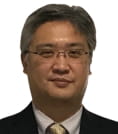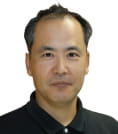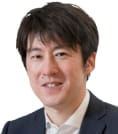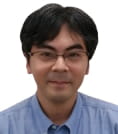- JST Home
- /
- Strategic Basic Research Programs
- /
 CREST
CREST- /
- Research Director/
- Mathematical Information Platform/
- [Mathematical Information Platform] Year Started : 2019
[Mathematical Information Platform] Year Started : 2019
Kenji Kajiwara
ED3GE: Evolving Design and Discrete Differential GEometry - towards Mathematics Aided Computer Design
Grant No.:JPMJCR1911
Research Director
Kenji Kajiwara

Director・Professor
Institute of Mathematics for Industry
Kyushu University
Collaborator
| Makoto Ohsaki | Professor Graduate School of Engineering Kyoto University |
| Tadatoshi Sekine | Associate Professor Faculty of Engineering Shizuoka University |
| Kenji Takizawa | Professor Faculty of Science and Engineering Waseda University |
| Jun Mitani | Professor Faculty of Engineering University of Tsukuba |
| Yohei Yokosuka | Associate Professor Graduate School of Science and Engineering Kagoshima University |
Outline
We originate a novel geometry of discrete surfaces having the surfaces with good properties, such as developable surfaces, as the shape elements, incorporate the theory of aesthetic shapes and construct the technique of structural analysis/optimization on it. Under this framework, we develop an innovative software platform that enables structural design with high efficiency and low cost, endowed with beauty and artisticity, and guaranteeing security and safety. We integrate the knowledge in various areas of design to the geometry of shapes by the power of mathematics, and provide it as a basis of the regeneration of Japanese manufacturing which creates precise and beautiful products but with currently high cost.
Yoshiyuki Kabashima
Deciphering intracellular phenomena through information flow
Grant No.:JPMJCR1912
Research Director
Yoshiyuki Kabashima

Professor
Graduate School of Science
The University of Tokyo
Collaborator
| Shinsuke Uda | Associate Professor Center for Information and Data Science Education Yamaguchi University |
| Yasushi Sako | Chief Scientist Cluster for Pioneering Research RIKEN |
| Atsushi Hatano | Assistant Professor Graduate School of Medical and Dental Sciences Niigata Uiversity |
Outline
With the goal of deciphering intracellular phenomena, we develop data-driven methods to identify mechanisms that control information flow in living cells, and methods to assess the reliability of the obtained results. Our key concept is “information quantity”. The developed methods are to be employed to characterize the chain reactions of a few molecular species associated with carcinogenesis, as information flow, and to identify gene expression networks related to the immune system. By comparison of healthy and disordered systems, we aim to acquire knowledge that will lead to more effective diagnosis and treatment of cancer and immune disorders.
Yoshinobu Kawahara
Operator theoretic data analysis of complicated dynamics and its itegerated utilization with mathematical models
Grant No.:JPMJCR1913
Research Director
Yoshinobu Kawahara

Professor
Graduate School of Information Science and Technology
The University of Osaka
Collaborator
| Gen Kurosawa | Researcher Interdisciplinary Theoretical and Mathematical Sciences Program RIKEN |
| Hiroya Nakao | Professor School of Engineering Institute of Science Tokyo |
| Kennichi Bannai | Professor Faculty of Science and Technology Keio University |
Outline
We develop based on representations of nonlinear dynamical systems with operators, such as transfer operators, (1)methods for identifying important dynamics in complex systems using statistical schemes, (2)theories for physical interpretations/usages of the identified dynamics and (3)methods for prediction/leaning by utilizing those with mathematical models. And we apply the developed methods/theories to data analyses in various fields to verify those effectiveness. We study these problems with the participation of researchers on machine learning, mathematics, nonlinear physics and theoretical biology.
Takaharu Yaguchi
Structure Preserving System Modeling and Simulation Basis Based on Geometric Discrete Mechanics
Grant No.:JPMJCR1914
Research Director
Takaharu Yaguchi

Professor
Graduate School of Science
Kobe University
Collaborator
| Toshiaki Oomori | Associate Professor Graduate School of Engineering Kobe University |
| Nobuki Takayama | Professor Graduate School of Science Kobe University |
| Hiroaki Yoshimura | Professor Faculty of Science and Engineering Waseda University |
Outline
In this research, a discrete version of Lagrangian Dirac mechanics is constructed. This mechanics is integrated with various technologies of mathematical sciences and information sciences such as symplectic geometry, automatic differentiation, computational algebra, sparse modeling, and neural differential equations to construct new theories and new technologies that will be the foundation of modeling and simulation of various systems. We also implement these techniques as computer programs and develop a library for robust modeling and simulation.













